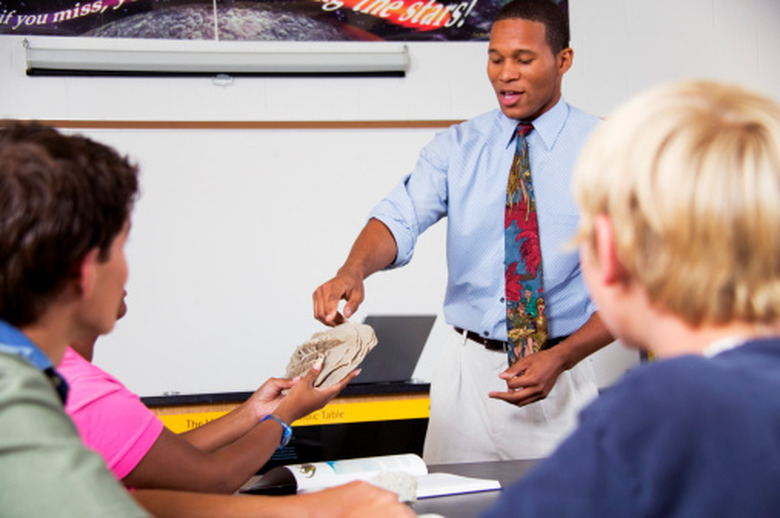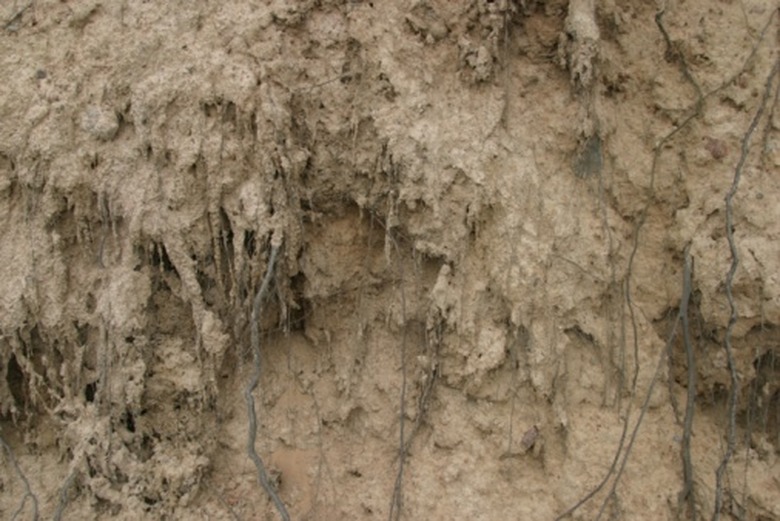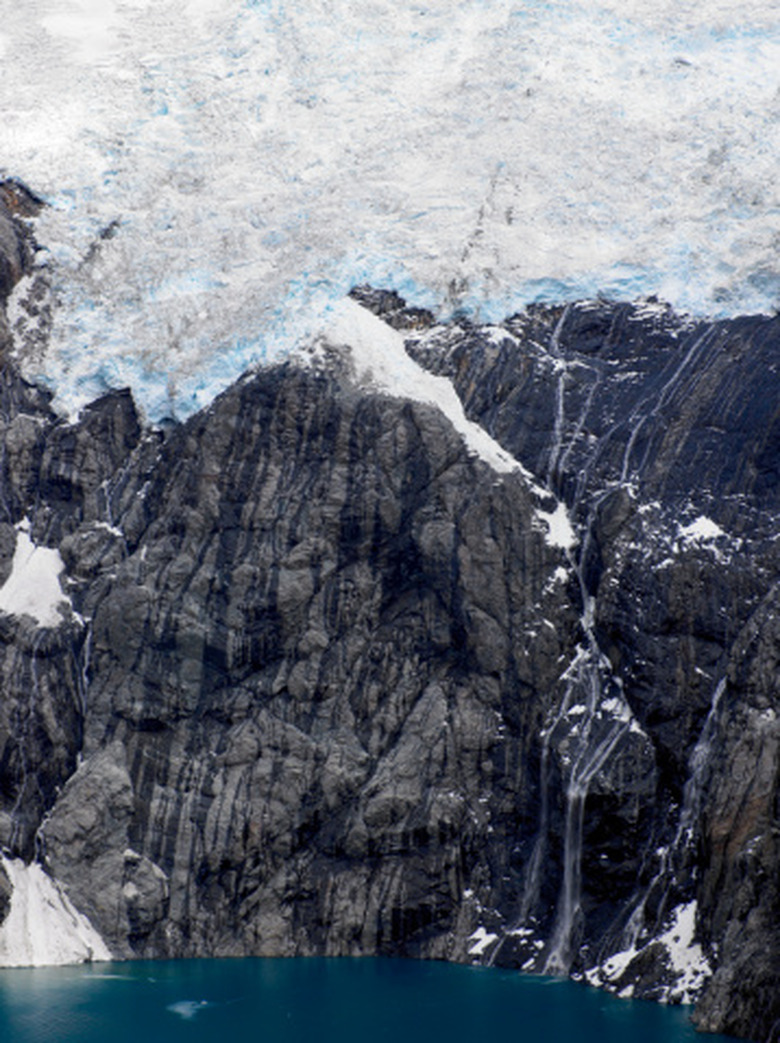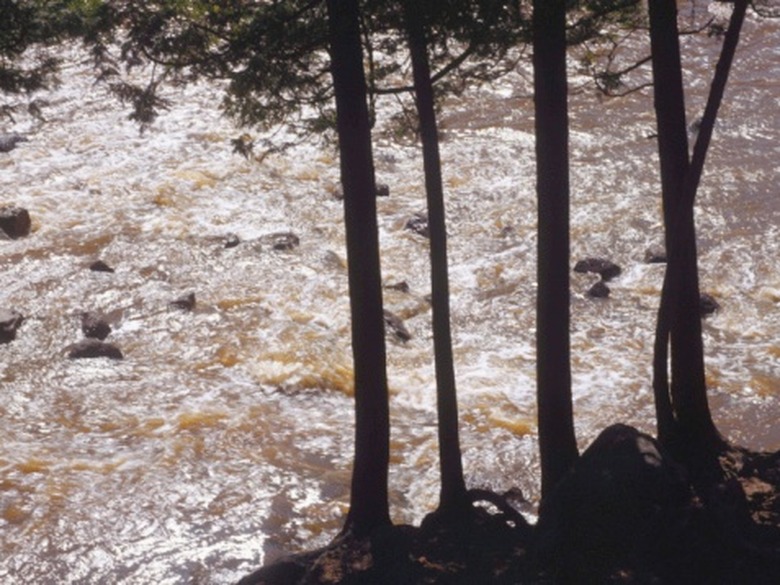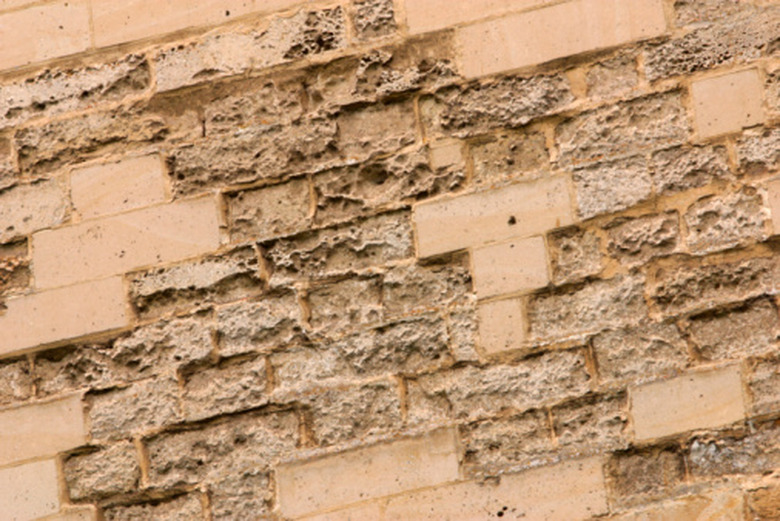Fourth-Grade Weathering And Erosion Activities
Weathering, erosion and deposition, the processes by which wind and water wear away and redistribute soil and rock, are among the topics covered in the fourth-grade earth science curriculum. These processes are easy for students to understand with the proper in-class demonstrations and hands-on experiments. They can then apply this understanding in an engaging homework assignment that encourages them to pay attention to the natural forces at work in the world around them.
Group Illustration
Group Illustration
Bring a deep dish containing dirt and a tray of preplanted turf to class. Have your students blow on the dirt and observe the way their breath makes the dirt move; compare this to wind moving the earth's soil and rocks. Have students blow on the turf and observe the fact that the soil does not shift; use this to illustrate that plants hold the earth's soil still. Repeat the procedure with water. Tilt the dish of dirt and pour water on it to show how water moves soil, and then tilt the turf and pour water on it to show how the grass roots hold the soil in place.
Student Exploration
Student Exploration
Give each student some sandpaper, a piece of chalk, a piece of limestone and a piece of concrete. Have them sand each substance with the sandpaper to see which they can easily "erode" and which are too hard. Explain to the students that the sandpaper is similar to how the wind and rain weathers rock. Have students look at their limestone rocks and notice that the rocks are not entirely solid but rather are porous enough for water to seep in. Ask students what would happen if that water then froze. Explain to them that the expanding ice would cause large chunks of the rock to splinter off, which is a much faster erosion process than the sandpaperlike wind and rain.
Deposition Illustration
Deposition Illustration
Bring a clear pitcher of water and a bag of dirt to class. Drop handfuls of the dirt into the water and ask students what they notice. Guide them as they observe that some of the dirt seems to float or hover in the middle of the pitcher, while some of it sinks immediately to the bottom. Gently agitate the water and show students how the water becomes more fully saturated with dirt when it is moving faster. Explain to students that fast-moving water and wind are able to erode and carry larger amounts of dirt or rock particles than slow-moving water and wind, which allows them to be transported long distances and eventually deposited in new places.
Observation
Observation
As homework, tell students to look for evidence of erosion in the outdoor places they visit. Have them notice the weathering on buildings, statues, sidewalks and potholes in the road and the unevenness in the banks of any local rivers or streams. Have them observe places where roots have helped to prevent erosion. Have them draw pictures of a city or town that shows signs of erosion, and ask them to note beside each example of weathering what they think may have caused it — wind, water or some combination of the two.
Cite This Article
MLA
Mitchell, Stephanie. "Fourth-Grade Weathering And Erosion Activities" sciencing.com, https://www.sciencing.com/fourthgrade-weathering-erosion-activities-8368482/. 24 April 2017.
APA
Mitchell, Stephanie. (2017, April 24). Fourth-Grade Weathering And Erosion Activities. sciencing.com. Retrieved from https://www.sciencing.com/fourthgrade-weathering-erosion-activities-8368482/
Chicago
Mitchell, Stephanie. Fourth-Grade Weathering And Erosion Activities last modified August 30, 2022. https://www.sciencing.com/fourthgrade-weathering-erosion-activities-8368482/
